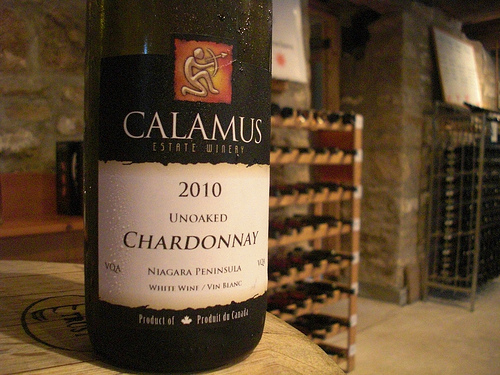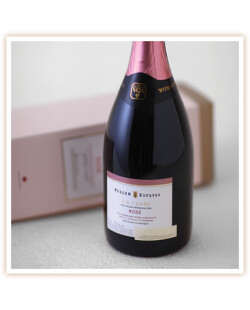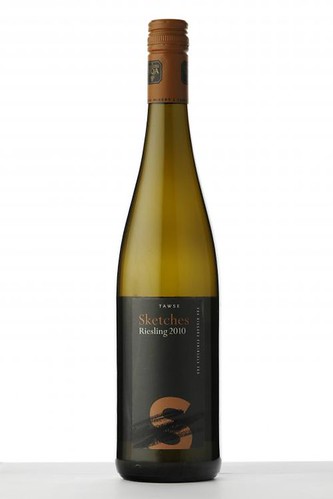
While aging and fermenting wines in oak barrels is the rule, rather than the exception, it’s nice to see wines in their purest form from time to time.
Oak adds complexity, spice and structure to red and white wines, but sometimes, due to a heavy-handed approach to oak, the fruit simply becomes background noise. What you are left with is a wine that’s unbalanced and all those pure fruit flavours are not properly accentuated.
I would go out on limb here and say Chardonnay is the most susceptible to the overuse of oak. The vast majority of Chardonnays made today have some sort of oak treatment added to them. I think the trend is to make wines now with less oak aging, but it’s still the key ingredient in Chards made the world over.
The most famous region for the unoaked style of Chardonnay is Chablis in Burgundy. The terroir of this fascinating region is perfect to let the minerality and freshness of Chardonnay shine all on its own.
In Niagara, also a mineral-rich growing region, most of the Chardonnay that’s produced has some form of oak treatment. That’s why it’s so refreshing to see the odd unoaked style emerge.
Calamus, which always prices its wines with the consumer in mind, built a fantastic example of unoaked Chardonnay from the warm 2010 vintage. It’s worth checking out. It’s part of the Vintages release Saturday. Here’s a review plus some other highlights of Niagara wines hitting the shelves.
Calamus Unoaked Chardonnay 2010 ($14, winery, 91 points) – Yes, as you can tell by the score, I loved this wine not only because it tastes fantastic but also because it’s only $14. The nose is fabulous with pronounced tropical fruits, green apples and peaches. It’s lush on the palate, with a touch of sweetness that’s more about ripe fruit than residual sugar, with clean fruit through the finish. What Chardonnay without the oak should taste like.
 Peller Estates Ice Cuvee Rose ($35, 93 points) – This is such a magical wine with strawberry, citrus, watermelon, raspberry, spice, honey and toast on the nose. Simply delicious in the mouth with a sweet, vigorous bead of bubbles, lush red fruits of raspberry and strawberry and just a kiss of sweetness to balance out the acidity. It’s made with a small dosage of Cabernet Franc and Vidal icewine.
Peller Estates Ice Cuvee Rose ($35, 93 points) – This is such a magical wine with strawberry, citrus, watermelon, raspberry, spice, honey and toast on the nose. Simply delicious in the mouth with a sweet, vigorous bead of bubbles, lush red fruits of raspberry and strawberry and just a kiss of sweetness to balance out the acidity. It’s made with a small dosage of Cabernet Franc and Vidal icewine.
Rosewood Natural Fermentation Reserve Pinot Noir 2009 ($40, 90 points) — Rosewood’s top Pinot has a personable, distinct nose of meaty bramble and red fruits lifted by wood spice and violets. On the palate, bright red fruits emerge from the earthy-bramble flavours. It’s smooth and polished and shows length through the finish.
 Tawse Sketches of Niagara Riesling 2010 ($18, 88 points) — A gold medal winner and a top five wine at the Canadian Wine Awards in 2012, this Riesling shows notes of limes, white peaches and a touch of honey and mineral notes on the nose. Wonderful and intense citrus fruit on the palate with lemon-lime leading the attack and acid-driven grapefruit supplying the backbone. Fresh and lip-smacking good.
Tawse Sketches of Niagara Riesling 2010 ($18, 88 points) — A gold medal winner and a top five wine at the Canadian Wine Awards in 2012, this Riesling shows notes of limes, white peaches and a touch of honey and mineral notes on the nose. Wonderful and intense citrus fruit on the palate with lemon-lime leading the attack and acid-driven grapefruit supplying the backbone. Fresh and lip-smacking good.
And some other Niagara wines being release but not reviewed:
• Featherstone Joy Premium Cuvee Sparkling Wine 2008 ($35)
• Featherstone Black Sheep Riesling ($17)
• Malivoire Chardonnay 2010 ($20)






Comment here